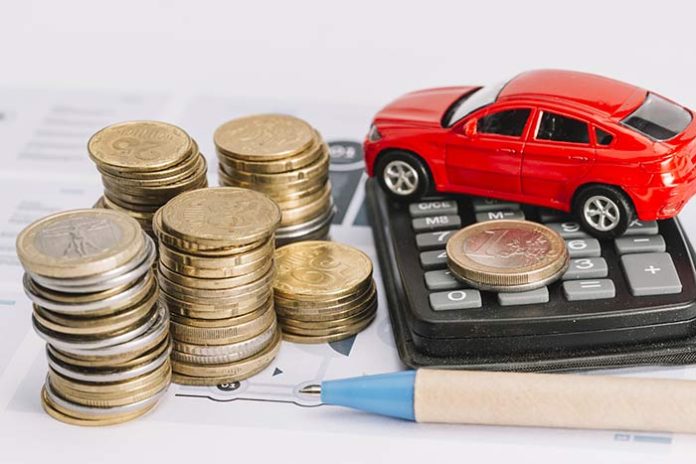Owning a car offers not only a sense of freedom and convenience but is the ultimate necessity of life. However, getting a car is no easy feat, especially in this crazy inflation.
According to Kelly Blue Book, the average price of a car is over $48,000.
Thus, it is essential to know how to save for a car, whether you purchase it at full price or finance it.
The best way around it is to estimate your target and manage your budget accordingly. In this article, we have explained in detail how to save money to get behind the wheel of your dream car.
Whether you are looking for soccer mom car to drive your kids to games or a professionals acquiring vehicles in order to be at time at their work space, then these tips will be helpful to getting a car without diving neck-deep into loans.
Why Save for a Car Beforehand?
Buying a car is a considerable investment. It is always better to go in with a well-thought-out plan instead of buying it on a whim. Saving up for a car instead of relying on a loan offers several advantages. It helps you make more informed decisions and avoid unnecessary financial strain.
Let’s get to some benefits you get by saving for a car beforehand.
1. Avoid Car Debt
How to stay out of debt while buying a car? Whether financing or buying it outright, having a large sum of money beforehand is a great idea. It reduces the size of your loan, securing your future finances.
2. Make a Big Car Down Payment
Saving enables you to make a substantial down payment on your car. It reduces your monthly payment and improves loan terms, such as low-interest rates. It might be a high upfront cost but it saves you money in the long run.
3. Reduced Financial Burden
If you save for your car, you won’t strain your finances later while purchasing. It gives you a lot of financial freedom and stability. One of the best personal finance tips that typically advisors offer is budgeting your monthly expenses by following the 50/30/20 rule. It will help you to manage your finances better.
Set your Target: How Much Do you Need to Save for a Car?
The first thing you need to do before saving up for your car is to evaluate how much you need to save. Without a clear goal in sight, setting a saving plan is to just shoot in the dark.
Several factors determine your saving target for your car. Whether you are saving for a full purchase price or a down payment or if you have a trade-in. Also, consider other car-related expenses, such as insurance, tax, or fuel.
Buying Upfront Or Financing for Car?
If you plan to buy a new car at full price, you must have quite a lot of money at once. If you don’t want a large debt on your back, it’s better to save for it. Research the prices of different vehicles you want and choose a cost-effective option.
If you are financing a vehicle, you must save enough for a down payment. Usually, it is 20% of the actual price of a new car but can vary. According to Edmund, an automotive website, drivers paid around $6,708 and $3,921 as down payments for new and old vehicles, respectively, in the fourth quarter of 2022.
How to calculate car loan monthly payment? Your monthly payment depends upon how much you borrow, your down payment, your interest rate, and your loan term. It is usually $716 for new cars and $526 for old ones.
The more you pay in the down payment, the better. It lowers your overall loan amount and monthly payment and gives you a better interest rate.
Leasing or Buying a Car?
Another option is to lease the vehicle instead of buying it. Leasing means you pay money to drive the car for some time. And at the end of the lease term, you can purchase at the agreed-before price or lease another one.
Leasing has a lower monthly payment as you don’t own the vehicle. It also has a down payment, often called a capitalized cost reduction. The more you put down in capitalized cost reduction, the lower the monthly payment.
If you have a Trade in Car?
Trading in a car you own for a new one is great to remove some financial burden off your shoulders. It lowers the cash you have to pay upfront or in a down payment, impacting your saving target.
Research the trade-in value of your current car and negotiate a fair deal with the dealership. Explore multiple options, as the value can vary.
Account for Additional Costs
In addition to the purchase price or monthly lease payments, you also need to consider other expenses related to the car. Estimate the following expenses while calculating your saving target:
- Maintenance cost
- Insurance premiums (around $168 a month)
- Fuel costs
- Registration fees and taxes
- Damage and repair costs
All these elements can add to the overall cost of owning a car. So it’s better to account for them beforehand in your saving plan.
Read More: Large SUV with Best Gas Mileage
6 Effective Tips on How to Save for a Car?

We all agree that car prices are behemoth- no denying there! That’s precisely the reason saving may seem like an impossible task. However, reading books on personal finance and sometimes viewing creative graphics like money related memes can teach you planning and discipline in saving.
Whether you want to buy a new or old vehicle, a solid saving plan is the foundation. Here are a few tips on how to save money without pinching your monthly necessities.
1. Apply 50/30/20 Rule on Budget
Creating your budget is a fundamental step in saving for a car. It tracks your income and expenses, giving you a clear picture of your money spending. Review your current expenses and identify areas for adjustments.
Employ the 50/30/20 rule for budgeting.
What is the 50-30-20 budget rule? It means using 50% of your income towards necessary expenses, such as groceries and bills, 30% on discretionary spending, and 20% on savings.
You can decide for yourself where you want to place your car funds. You can also adjust the percentages of spending and saving as per your income and expenses.
2. Limit Unnecessary Spending
Saving money on extra expenses and reallocating it to your car funds can accelerate your savings. Analyze your budget thoroughly and identify areas where you can cut back.
It could mean less frequent dine-outs or getting rid of that subscription you can totally live without. Go for mindful spending and identify if you really need something before spending your money on it.
Sometimes, it may seem frugal or penny-pinching, but these little cutbacks can make a huge difference in your car-saving goal.
3. Set Up a Savings Account
Having a separate savings account dedicated to your car funds serves several goals. First, it prevents you from spending your car savings for other purposes. Secondly, it helps you track the progress of your saving plan. You can check your account balance whenever you want to see where you are standing.
4. Automate your Savings
Set up automatic monthly transfers from your primary account to your savings account. It helps to:
- Reduce the hassle of manual transfers and deposits.
- Stay consistent on the saving track.
- Lower the chances of that money getting spent on other expenses.
You can get your bank to transfer money each month to your savings account. Also, several budgeting apps have this feature to make automatic transfers per your saving goals and expenses.
5. Pick Up A Side Hustle
Wanna drive your car sooner than later? Better do something extra for it!
A side hustle job or gig can provide extra income to dedicate solely to your car savings. Consider options like freelancing, driving an Uber, tutoring, or even pet-sitting can be incredible.
Find a side job that suits your skills and interest and provide a reasonable sum of money. The extra income will only accelerate you in the direction of your car.
6. Contribute Any Spare Cash
Nothing better than some extra money! If you get a cash influx in your hand, direct it to your car savings account. Use a bonus at work, college graduation gift, or even a lottery to boost your car savings goal.
Resist spending the money impulsively and remind yourself of the dream of owning your own car. Here, the bigger picture matters!
Bottom Line!
Saving for a car is a wise financial decision that puts off the burden of huge loans and down payments. It gives you a sense of control over your finances and gets you better deals and terms.
By setting a realistic goal, cutting back on extra expenses, and using different financial strategies, you can easily be on the way to being behind the wheel.
Evaluate your budget, plan wisely, and be consistent with your savings. Remember that every dollar saved brings you closer to driving off in the car of your dreams.





